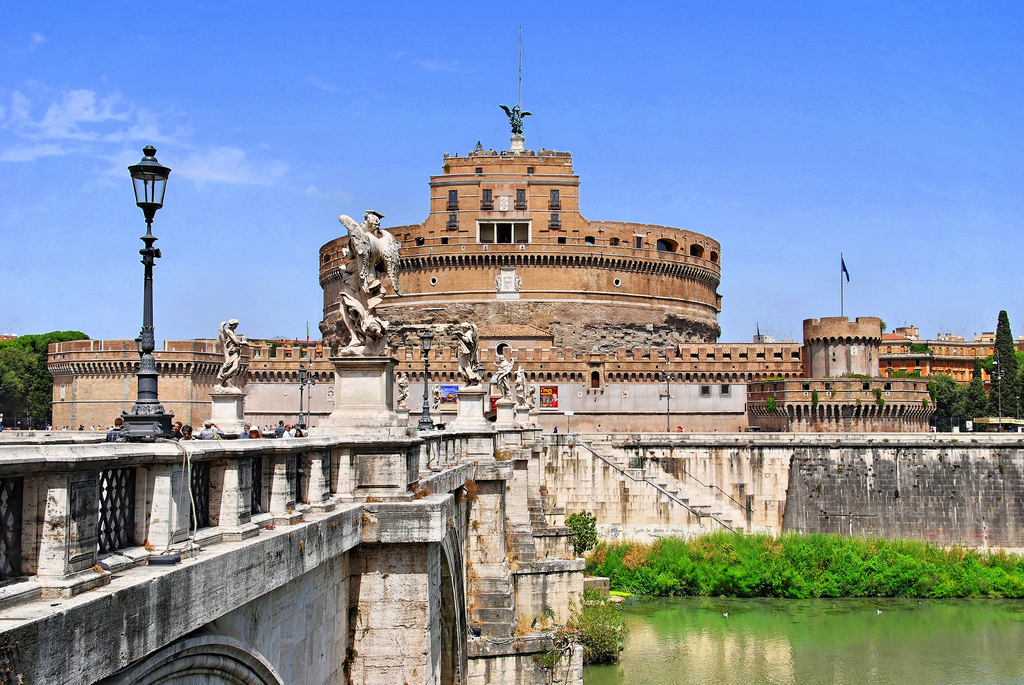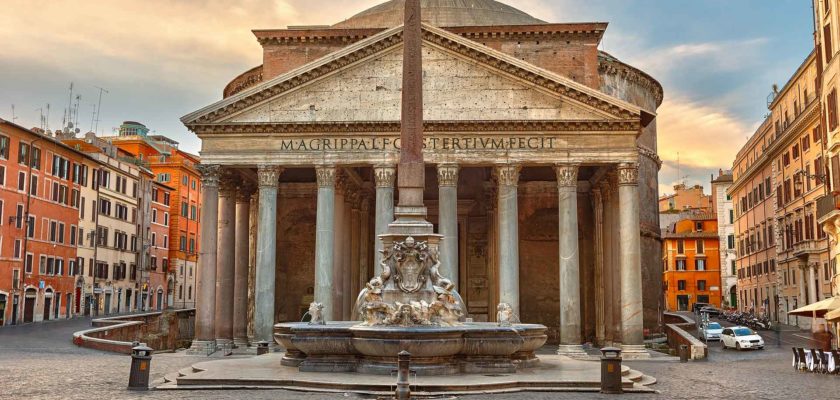Rome’s buildings reflect its history, culture, and power, as well as its artistic and engineering achievements. In this article, we will explore some of the top 7 famous Roman buildings that visitors can admire and learn from. It provides information on their location, history, style, and significance. It also highlights some of the masterpieces and treasures that they contain.
The Roman Forum
The Roman Forum is the site of the remains of ancient Rome’s government buildings. It was the center of political, religious, social, and commercial life in Rome for centuries. The Roman Forum was established around 500 BC and remained in use until the 8th century AD, making it one of the famous Roman architectures.
The Forum contains many monuments and structures that testify to Rome’s glory and history, such as the Arch of Titus, the Temple of Saturn, the Basilica of Maxentius, and the Rostra. The Forum also offers a glimpse into the daily life of ancient Romans, as it was filled with shops, markets, temples, courts, and statues.
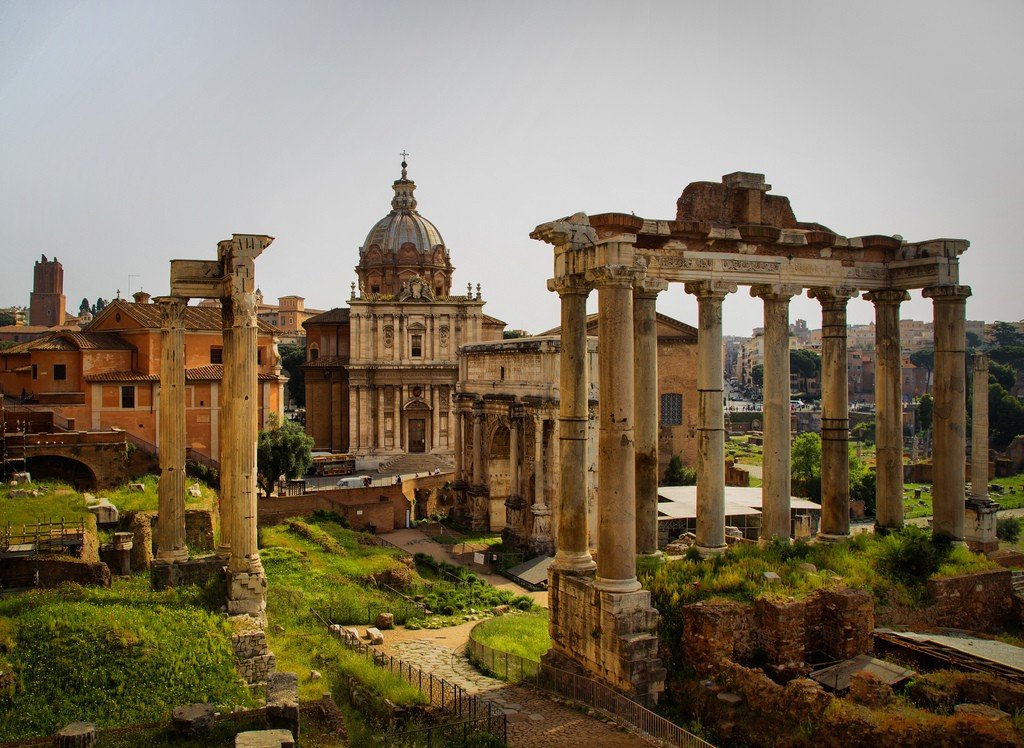
The Colosseum
The Colosseum is the largest amphitheater ever built and was used for gladiator battles and other spectacles. The Colosseum is a marvel of Roman engineering, featuring a complex system of underground tunnels, elevators, and trapdoors that allowed animals and performers to be brought into the arena.
It was constructed between 72 and 80 AD by the emperors Vespasian and Titus. The Colosseum is also a symbol of Rome’s endurance and resilience, as it has survived earthquakes, fires, vandalism, and wars over the centuries. The Colosseum is one of the Seven Wonders of the World and also one of the famous buildings in the world.
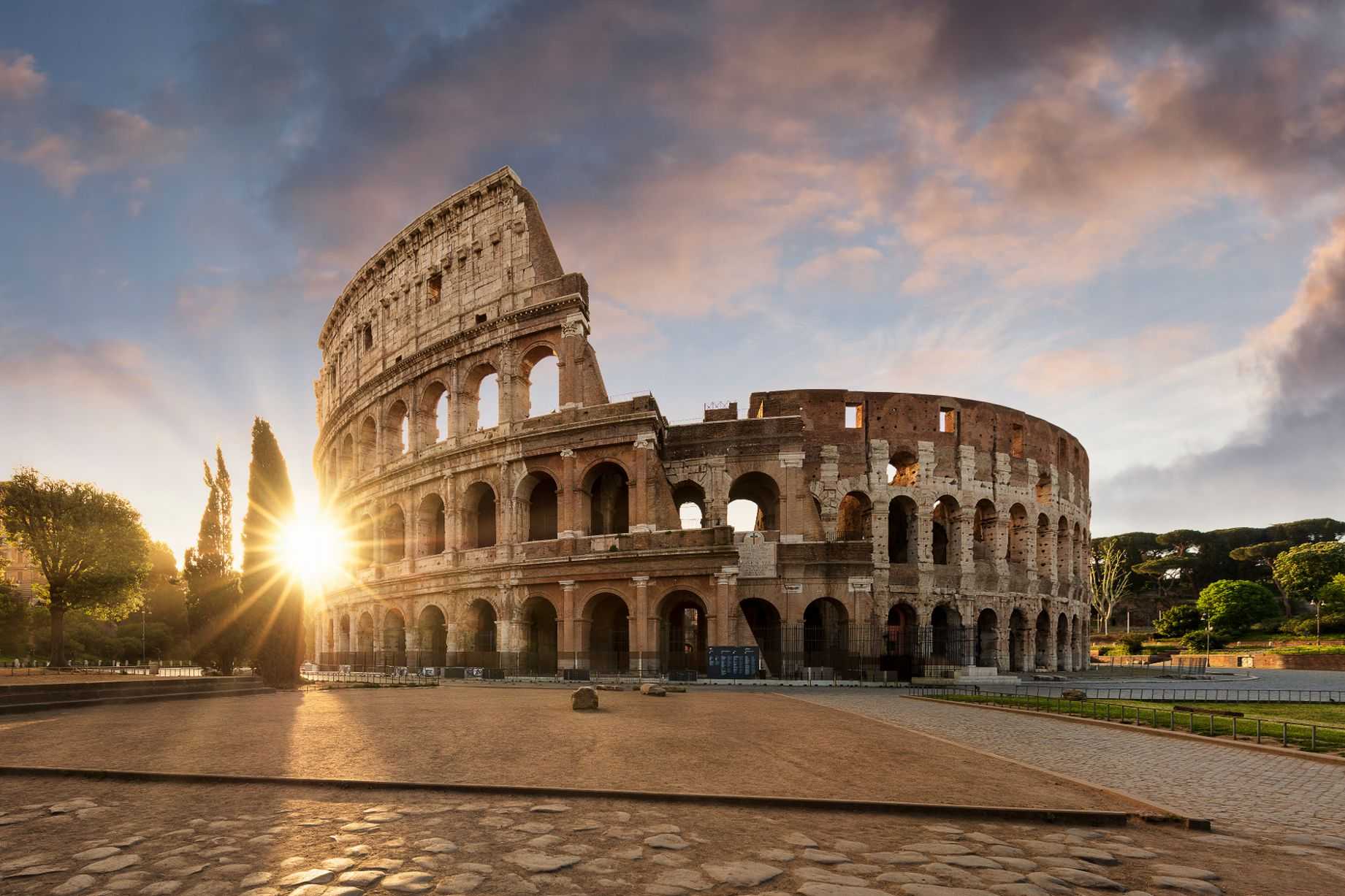
Arch of Constantine
The Arch of Constantine is a triumphal arch in Rome dedicated to the emperor Constantine the Great. The arch was commissioned by the Roman Senate to commemorate Constantine’s victory over Maxentius at the Battle of Milvian Bridge in AD 312. It is the largest surviving Roman triumphal arch and the last great monument of Imperial Rome.
It is located along the Via Triumphalis, the route taken by victorious military leaders when they entered the city in a triumphal procession. It has three bays, with a large central arch and two smaller side arches, each flanked by detached Corinthian columns on pedestals.
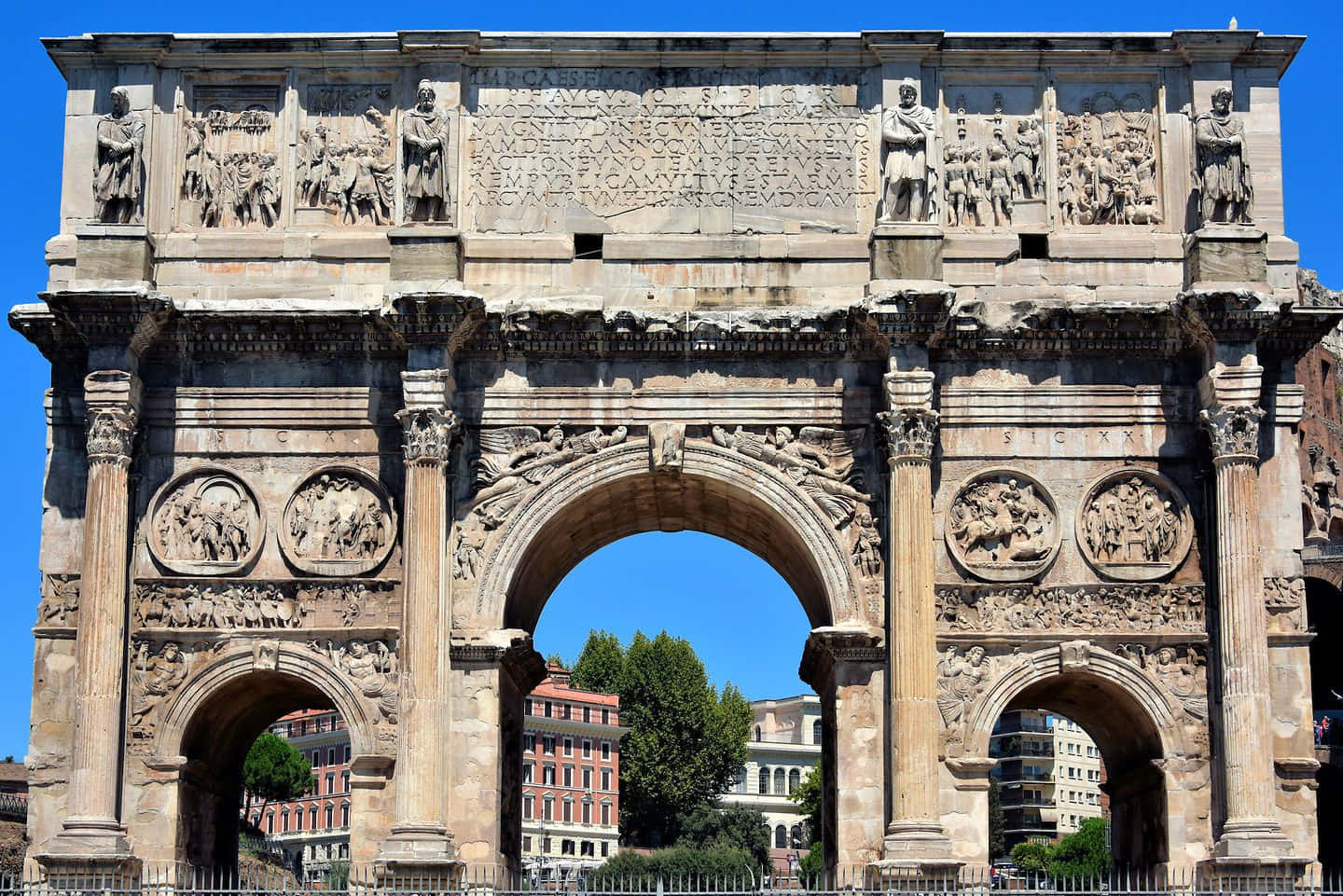
The Pantheon
The Pantheon is a domed temple devoted to all gods and the Roman dynasty. It was built by the emperor Hadrian between 118 and 125 AD, replacing an earlier temple that was destroyed by fire. The dome has an oculus (a circular opening) at its center that allows natural light to enter the interior.
The Pantheon is also remarkable for its harmonious proportions, elegant columns, and rich decoration, making it one of the famous Roman buildings. It is a former temple dedicated to all Roman gods and later converted into a Catholic church and a burial place for several important people.
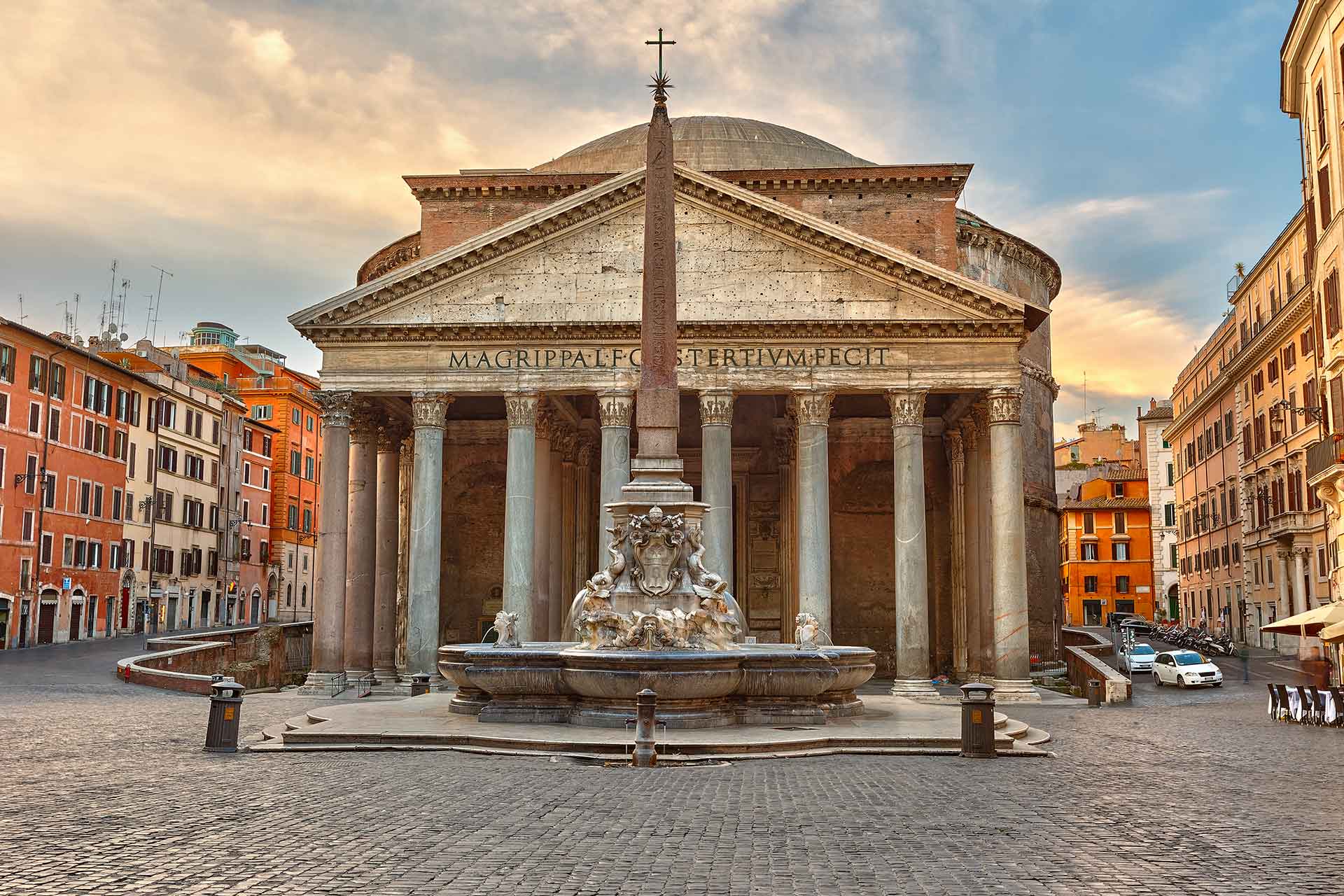
The Altare della Patria
The Altare della Patria is a monumental complex that honors Victor Emmanuel II, the first king of unified Italy. It was built between 1885 and 1925 by Giuseppe Sacconi and other architects, following a neoclassical style. The complex consists of a large white marble building with columns, statues, fountains, and a central equestrian statue of Victor Emmanuel II. The complex also houses the Tomb of the Unknown Soldier, a symbol of Italy’s sacrifice in World War I. The complex offers panoramic views of Rome from its terraces and museum.
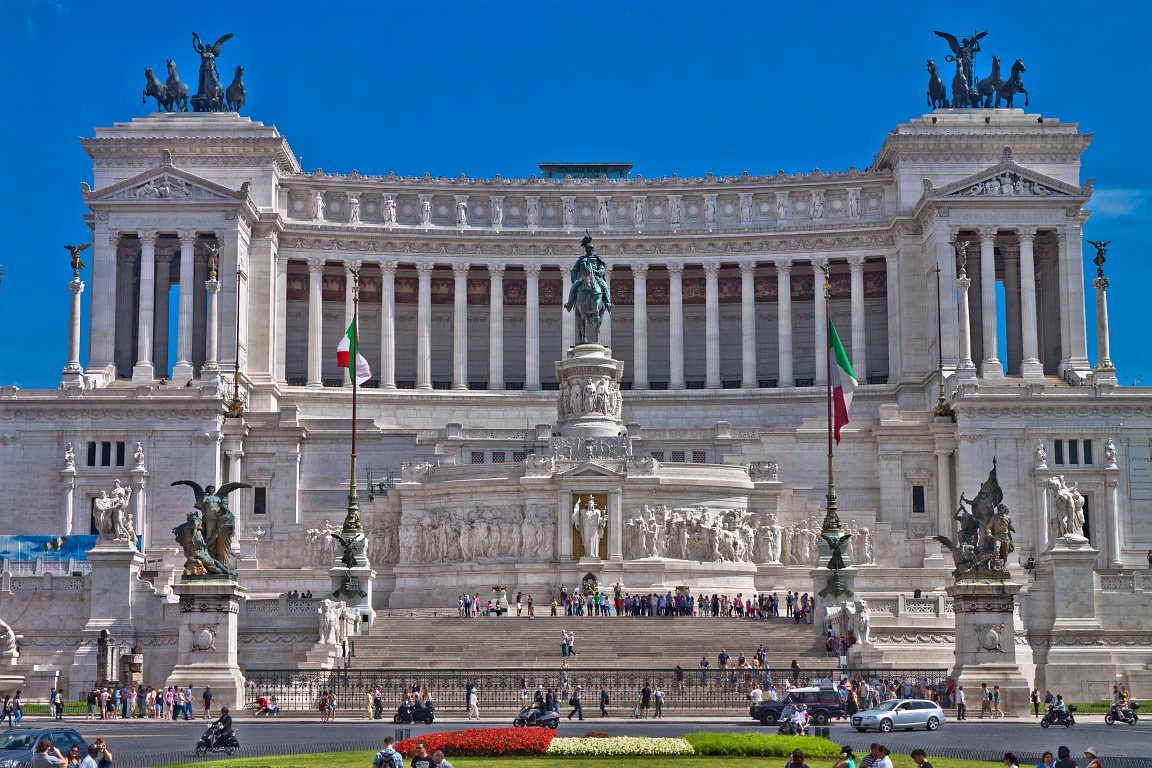
The Trevi Fountain
The Trevi Fountain is the largest and one of the most famous fountains in the world. It was built between 1732 and 1762 by Nicola Salvi and Giuseppe Pannini, following a design by Bernini. The fountain depicts Oceanus, the god of water, riding a chariot pulled by sea horses and tritons, surrounded by rocks, plants, and statues of allegorical figures. The fountain is fed by an ancient aqueduct that dates back to 19 BC. The fountain is also a popular tourist attraction, as it is said that throwing a coin into the water ensures a return to Rome. Designed by Nicola Salvi and completed by Giuseppe Pannini in 1762, after a long and complex history of construction and competition.
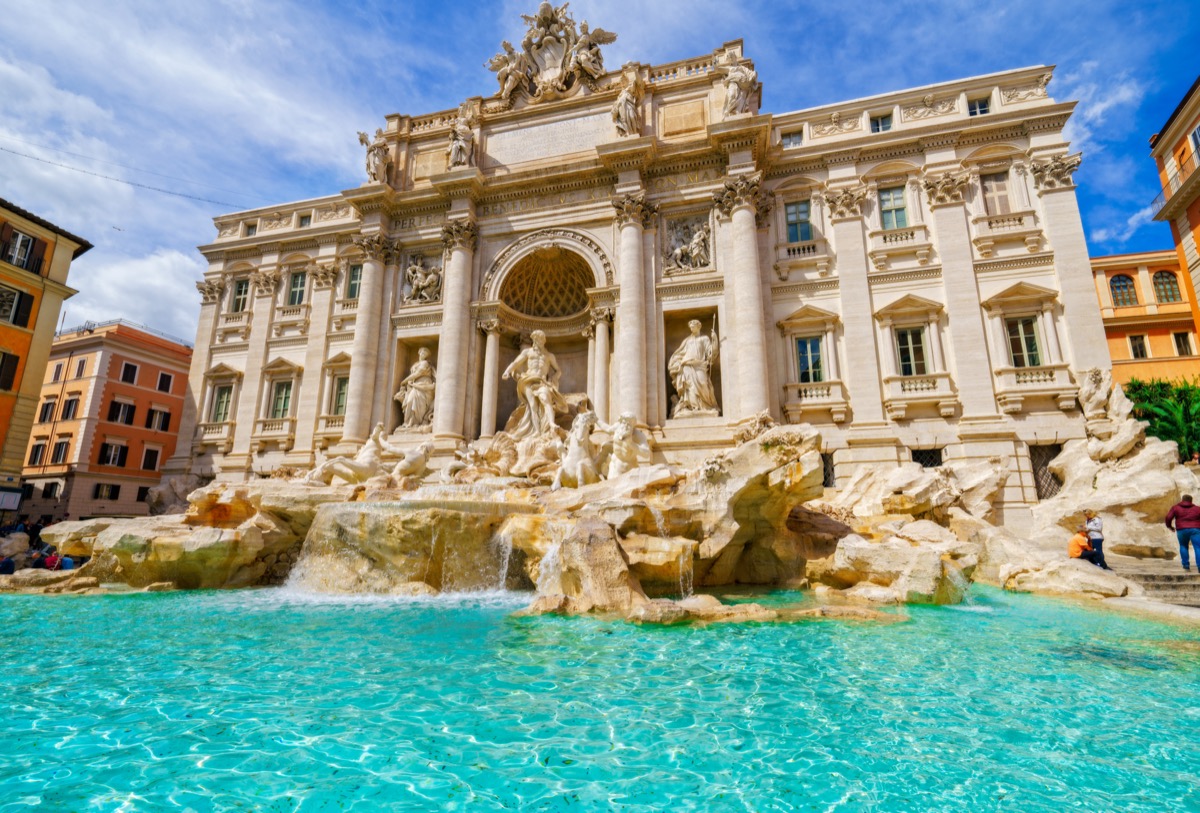
Castel Sant’Angelo
Castel Sant’Angelo was originally built as the mausoleum for Emperor Hadrian in 139 AD, and it has been many things since. It has served as a fortress, a prison, a papal residence, a museum, and a national monument. However, Castel Sant’Angelo is still listed among the famous Roman buildings. Castel Sant’Angelo is connected to St Peter’s Basilica by a fortified corridor called the Passetto di Borgo, which allowed popes to escape in times of danger. Castel Sant’Angelo is also known for its angel statue on top, which gives it its name.
